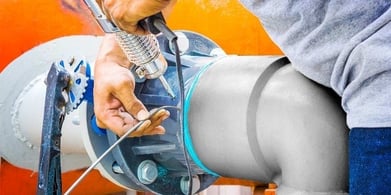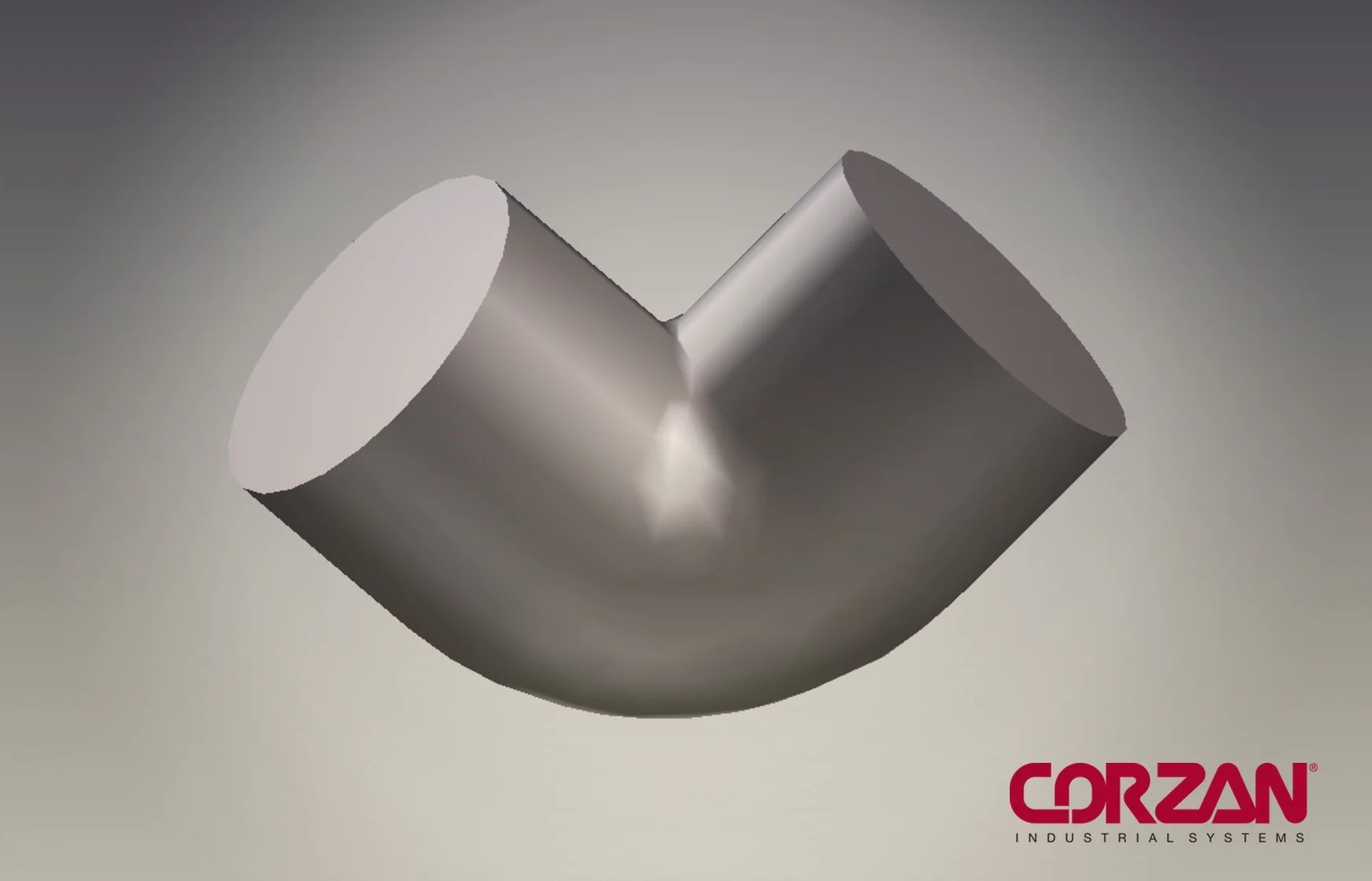CORZAN® CPVC PIPING
BACK-WELDING
CORZAN® CPVC PIPING
BACK-WELDING
Back-welding may be used to repair minor leaks in solvent cemented or threaded joints. Back-welding is a hot-air welding technique that is executed by forcing a welding rod to

Before hot-air welding begins, the section of piping where the repair will be made must be emptied. Joints should not be welded with fluid still in the pipe.
All dirt and moisture should be wiped away from the joint to be repaired. Excess dried solvent cement around the joint should be removed with an emery cloth. Residual solvent cement may tend to scorch and burn during welding. If the joint to be welded is a threaded joint, excess threads in the joint area should be removed with a file in order to provide a smooth surface for welding.
If a speed tip will be used for back-welding, refer to the section on fabrication with high speed hot air welding for the proper conditions and techniques to use.
If welding will be done by feeding the rod manually, the following conditions and procedures should be used:
- The welding temperature should be approximately 550 to 600°F (287.8 to 315.6°C). Only welding rod made of Corzan® CPVC should be used for back welding CPVC joints.
- The end of the welding rod should be inserted into the junction of the pipe and fitting, and the rod should be held at a 90° angle to the joint.
- The rod and base material should be preheated with the welding torch 1/4 to 3/4 in. away from both the rod and the base material and fanning back and forth in the immediate welding area.
- While preheating, the rod can be moved up and down until it is soft enough to stick to the base.
- When the materials are softened enough to fuse, the rod should be advanced by the application of a slight pressure.
- The fanning motion of the torch should be continued throughout the welding process. When the weld is finished, another inch of rod material should be lapped over the bead.
- When large diameter pipe is welded, additional beads may be required to fill the joint adequately. The first bead should be laid directly into the joint fillet, and the subsequent beads on either side of the first bead.


